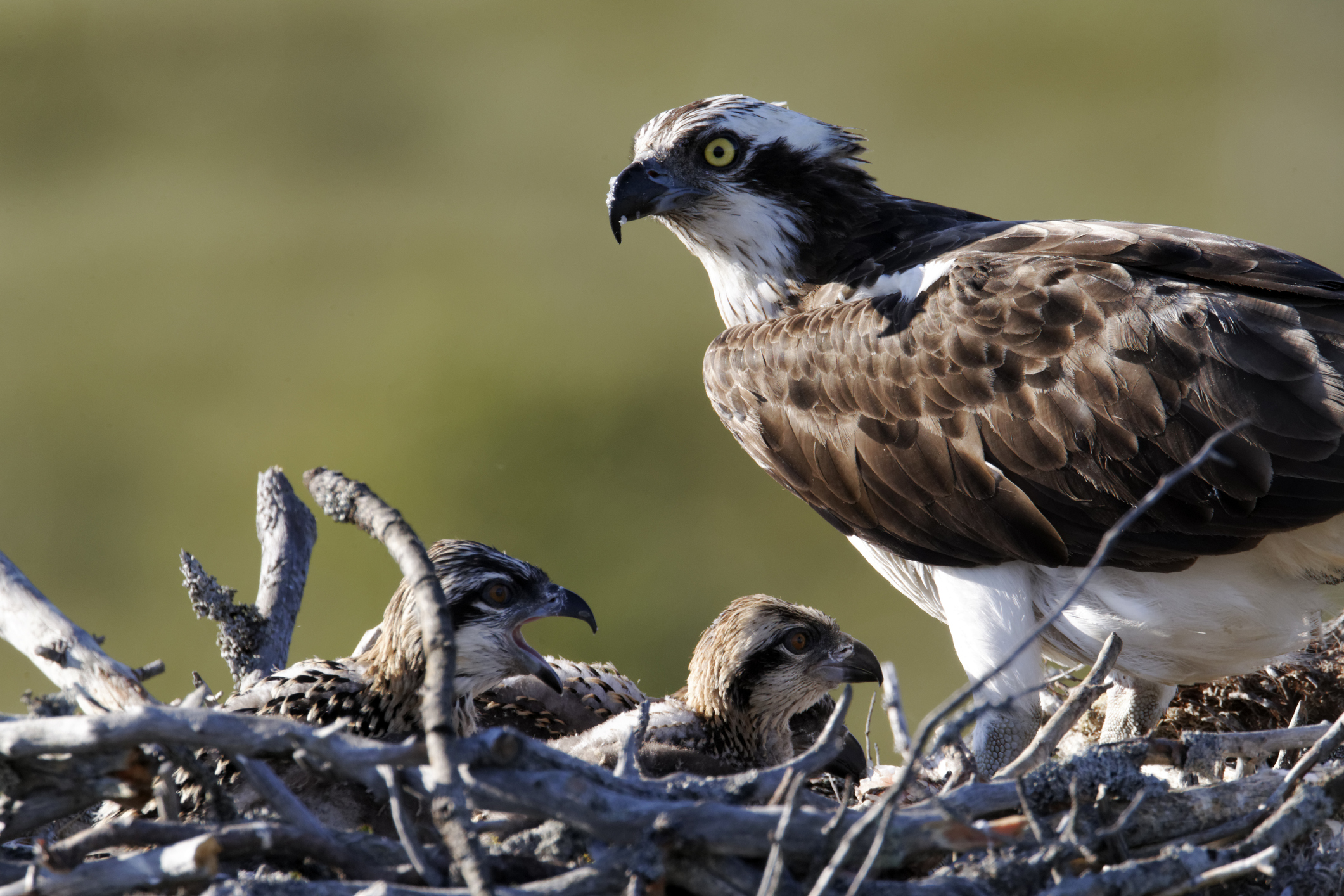Local Ospreys Make Full Recovery, Group for the East End Reports

Eastern Long Island’s osprey population has made an incredible comeback in recent years, according to a new report from local environmental organization Group for the East End (GEE). Sent out Friday, October 22, the report asserts that the East End osprey population “has made a full recovery,” which would bring the raptor back from its “Special Concern” status, as established by the NY State Department of Environmental Conservation in 1999, should the DEC agree with these findings.
Ospreys were listed as “Endangered” in 1976 after the insecticide DDT had ravaged populations by causing eggshell thinning, reducing reproductive output, NYSDEC says on its website. Since New York State banned DDT in 1971, and the rest of the country followed suit in 1972, ospreys were downgraded to “Threatened” status in 1983, and “Special Concern” in 1999.
GEE monitored osprey populations in all five of the East End towns, including East Hampton, Riverhead, Shelter Island, Southampton and Southold, documenting 466 active nesting pairs, which produced 585 fledglings. In addition to monitoring efforts, GEE says they installed and maintained more than 250 osprey nesting platforms over the past three decades, which were critical to the bird’s recovery, complementing efforts by numerous other conservation groups — such as The Nature Conservancy, Eastern Long Island Audubon, North Fork Audubon and Seatuck Environmental Association, among many more — as well as New York State and Suffolk County Parks, homeowner associations, municipalities and private citizens with the shared goal to protect and sustain the osprey.
PSEG Long Island has also become a critical conservation partner, according to GEE, helping the organization develop a long-term monitoring and maintenance program for active osprey nests Island-wide to identify problematic nest sites and provide accurate population and habitat data.
Demonstrating the success of these programs, the GEE report points out that monitoring undertaken across the five East End towns in 2014 identified 199 active nests. This past season, just seven years later, the total number of active nests reached 460, with nearly 600 birds fledged. The organization says improved monitoring efforts have no doubt identified additional nests which may not have been counted in earlier years, but the number of active nests has still increased steadily, and by well over 200%, in less than a decade.
In addition to the efforts detailed above, GEE says the “robust increase can be traced to changes in fishing regulations over the past decade, specifically regarding the limit on the amount of ‘bunker’ or menhaden, a smaller fish that is predated on by larger fish, such as bluefish and striped bass.” While the regulations were put in place to improve the local commercial and recreational fishing economy, they have benefited ospreys by increasing the availability of a vital source of food. Fish account for roughly 99% of an osprey’s diet.
“The current osprey population is thriving,” GEE’s director of environmental education Steve Biasetti explains in the report. “While it continues to be our collective responsibility to be vigilant environmental stewards, I confidently assert that the osprey population has made a full recovery on eastern Long Island.”
Despite this excellent and encouraging news, GEE will continue its work. According to Group President Bob DeLuca, “Now that the breeding season has passed, our monitoring team is back in the field working with PSEG Long Island to identify those particular utility poles that create the most hazardous conditions for nesting and working to prioritize the installation of more hazardous nest deterrents ahead of next year’s breeding season. The sooner we can identify the areas of greatest hazard, the sooner we can provide proactive protection for our returning ospreys.”
For more information about Group for the East End, including the full osprey report, visit groupfortheeastend.org or call 631-765-6450.



